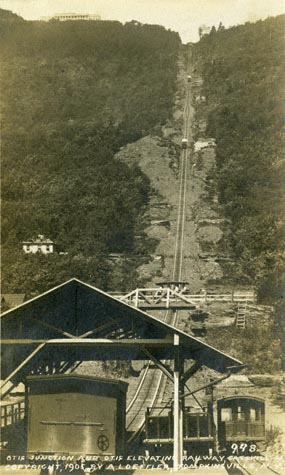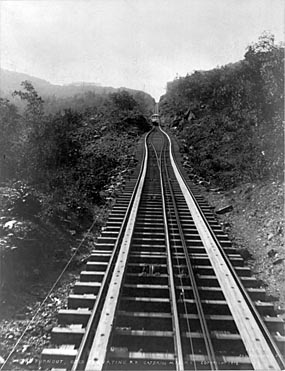|


|
This is a closeup of the tracks at the
"bulge" in the railway, where the two cars pass each other.
Just above the car on left is where the center, shared metal track
splits into two diverging tracks that rejoin further down. Attached
to each car are the ends of the double metal cable seen on the right,
on the left you can see the round cable guides. The wooden rail was
used for braking, as explained here in the Scientific
American article:
"To the ties on each side of the central
rail are secured heavy timbers which extend from one end of the
railway to the other, and upon each car is firmly attached a clutch
capable of of gripping this timber upon the top and sides. The clutch
is under the control of a governor which rolls on the top of the
timber. Any considerable increase in the speed of the governor
releases the clutch and causes it to be thrown forcibly into the
timber, thus instantly arresting the downward motion of the car. The
two cables are also attached to a swivel plate upon each car, which
is connected with the clutch mechanism, so that should one of the
cables fail, the other will turn the swivel plate and cause the
clutch to engage the timber. The clutch can also be operated by hand
at the will of the conductor."
The
1905 picture of the Otis on the left by A. Loeffler gives a clear view of the passing area, called the turnout. The passing area is between the two cars, and marks the half way point on the track.
The picture below from the Library of Congress shows the turnout. The photographer is on the front of the car on the right as it approaches the turnout.

|







